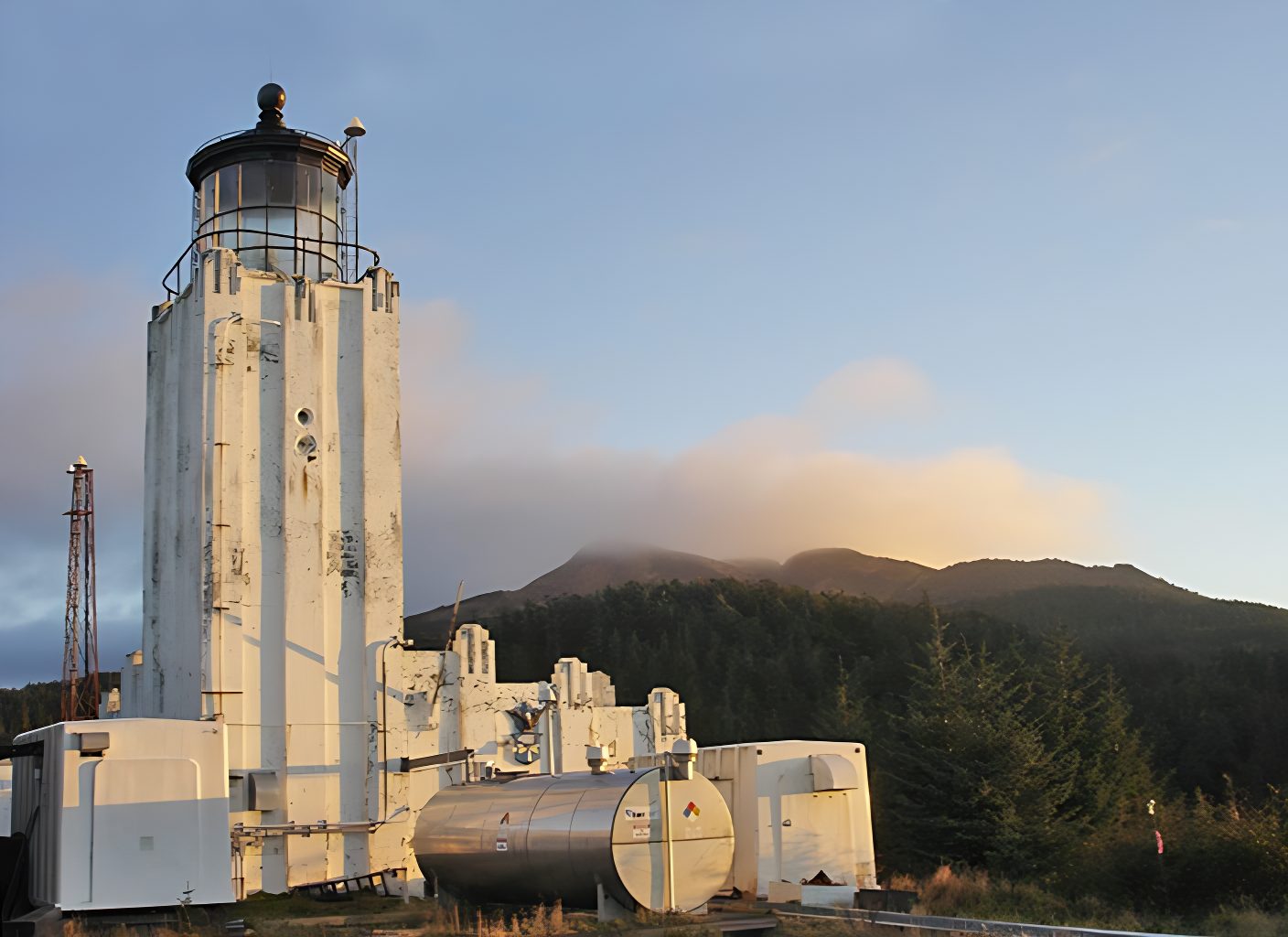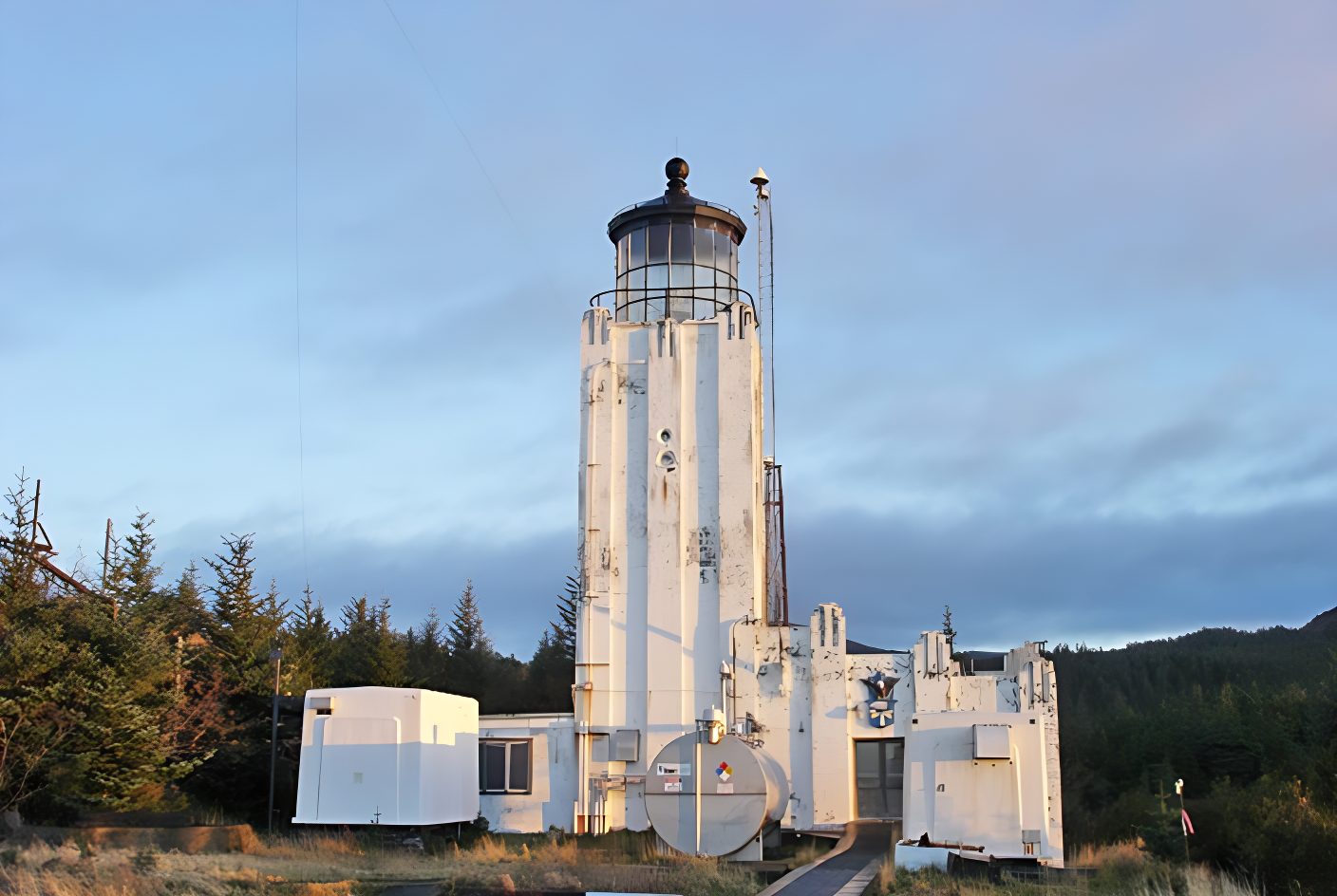Cape Hinchinbrook Lighthouse
The combination fog signal, light tower, and keepers’ dwelling took the form of a two-story octagonal concrete building with a central octagonal tower rising an additional seven feet above the structure’s pyramidal frame roof.

Cape Hinchinbrook History
Perched atop a 188-foot cliff, the tower’s light, produced by an incandescent oil vapor lamp and a Barbier, Benard & Turenne, third-order Fresnel lens, had a focal plane of 235 feet above the water. A clockwork mechanism was used to revolve the four-panel lens, which floated in a bed of 187 pounds of mercury, producing a white flash every five seconds. Concrete walks and a tramway connected the lighthouse to the station’s outbuildings, which included a carpenter shop, an oil house, and, far below on the shore, a boathouse.

At Admiralty Island
About Us
Lighthouses are a beacon. Properly used, they’re a beacon of hope to ward off impending danger, yet protecting from and warning of danger is exactly what they’re for.
The earliest lighthouses go back to biblical times, all with a mission to protect mariners. Navigating boats & ships safely means that aids to navigation had to be used to warn of the rocks & shoals, the sudden changes of seascape, and other hazards that prevented safe passage.
The lighthouses of Alaska, which you’ll find in this site, are testament to the challenges of marine navigation, life along the coast of Alaska, and the inherent dangers that can swell up and crush a concrete structure in moments, witness Scotch Gap. Yet for the many lives that have been lost, the lives saved because of these amazing aids to navigation can barely be quantified. We hope you enjoy our site.
Alaska History is Waiting


